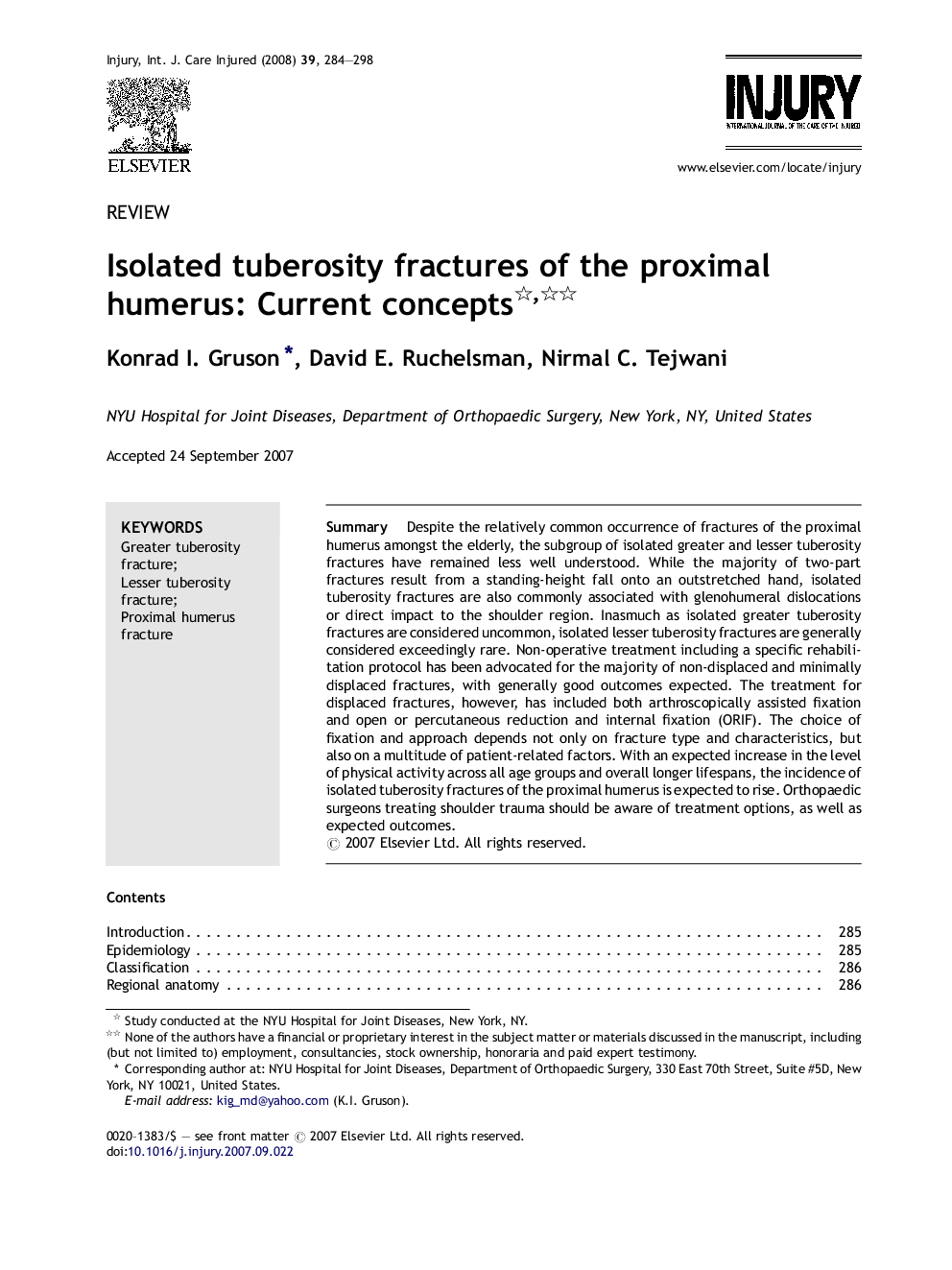| Article ID | Journal | Published Year | Pages | File Type |
|---|---|---|---|---|
| 3242877 | Injury | 2008 | 15 Pages |
SummaryDespite the relatively common occurrence of fractures of the proximal humerus amongst the elderly, the subgroup of isolated greater and lesser tuberosity fractures have remained less well understood. While the majority of two-part fractures result from a standing-height fall onto an outstretched hand, isolated tuberosity fractures are also commonly associated with glenohumeral dislocations or direct impact to the shoulder region. Inasmuch as isolated greater tuberosity fractures are considered uncommon, isolated lesser tuberosity fractures are generally considered exceedingly rare. Non-operative treatment including a specific rehabilitation protocol has been advocated for the majority of non-displaced and minimally displaced fractures, with generally good outcomes expected. The treatment for displaced fractures, however, has included both arthroscopically assisted fixation and open or percutaneous reduction and internal fixation (ORIF). The choice of fixation and approach depends not only on fracture type and characteristics, but also on a multitude of patient-related factors. With an expected increase in the level of physical activity across all age groups and overall longer lifespans, the incidence of isolated tuberosity fractures of the proximal humerus is expected to rise. Orthopaedic surgeons treating shoulder trauma should be aware of treatment options, as well as expected outcomes.
